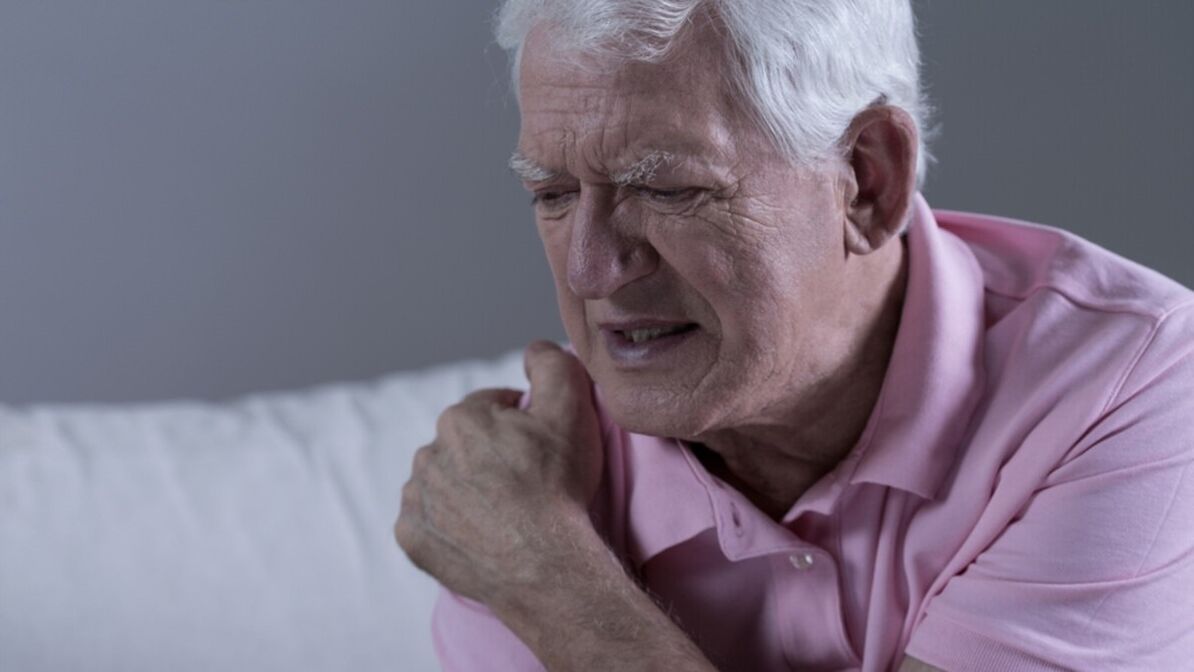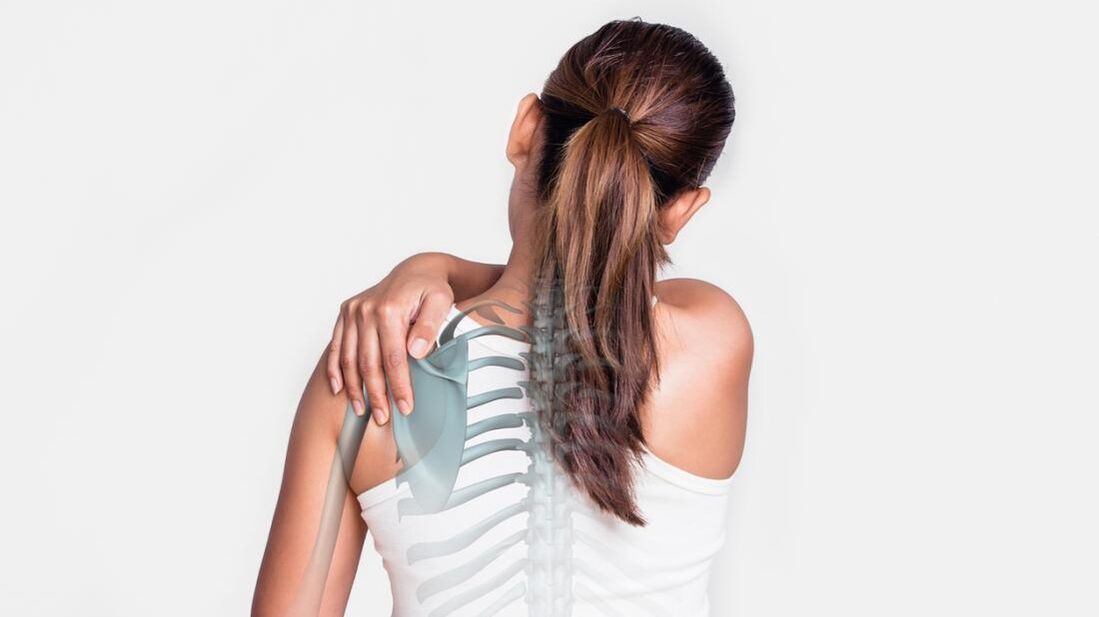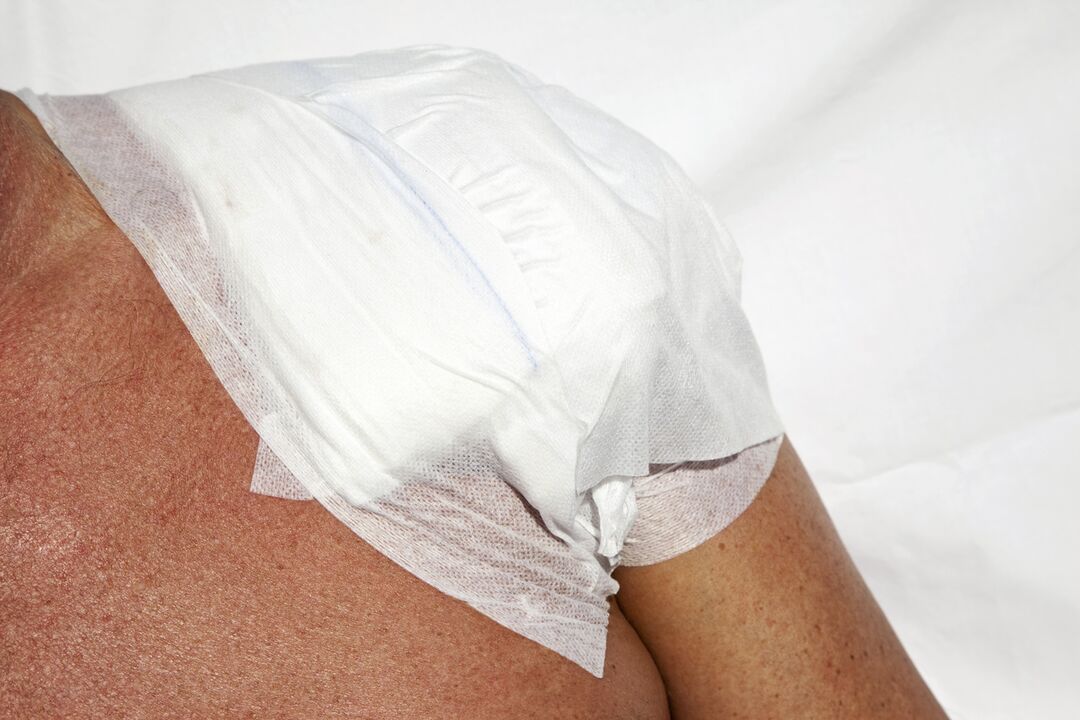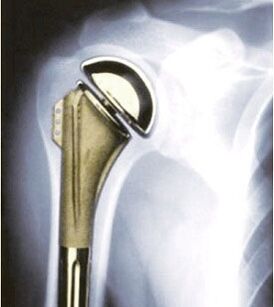Shoulder osteoarthritis is accompanied by swelling, severe pain in the shoulder area, limited mobility. Causes and symptoms of the disease, available treatments and ways to help at home will be covered later in the article.

What is shoulder arthritis?
The shoulder joint has a complex structure and is the most mobile joint, providing the human body with the fullest range of motion. The capsule of the shoulder can be very flexed, so that a person can lift his or her arm vertically and perform rotational movements with it. This activity weakens the ligaments, and as a result of the tendons being strongly flexed, they are often mildly ischemic.
It is the lack of nutrition of the joint tissue that is the main threat that leads to its destruction and gives an impetus to the development of pathology.
This disease manifests mainly in the degeneration of tissues in the shoulder joint, known as shoulder osteoarthritis or also known as shoulder osteoarthritis. The biomechanics of the shoulder are built on the flawless work of all components: normal nerve conduction, good blood supply, perfect anatomy. Violation of any of these conditions invariably leads to the fact that the internal tissues begin to deform, causing discomfort, limitation of movement, pain.
Osteoarthritis (or osteoarthritis) is first and foremost a non-inflammatory disease of a degenerative nature. It is associated with ischemic processes in the surrounding tissues for various reasons.
As a result, the nutrition of the joint is disturbed, which is why the thin and elastic layer of hyaline cartilage that covers the ends of the bones becomes thinner. Becoming less elastic and thinner, the hyalinized cartilage makes it difficult to move normally, causing the joint space to narrow.
This causes the body to function, and growths of bone called osteoblasts form around the edges of joints. It is the bone-forming substances that damage muscles and ligaments with their sharp edges, causing chronic inflammation.
The main danger of osteoarthritis lies in the fact that a slight limitation in the mobility of the hand always leads to a decrease in range of motion.
Without movement, the shoulder begins to accumulate salt in the tissues surrounding the joint, and as a result, the nutrition of the joint tissues is impaired. Over time, this will lead to the formation of spasticity - limiting mobility, or completely losing mobility of the shoulder and disabling the patient.
Causes of shoulder osteoarthritis
The only cause of shoulder joint disease is deep ischemia, i. e. a sharp or gradual decrease in blood supply to certain areas of tissue and depletion of nutrients to the joint. But this is because factors can appear singly or simultaneously in the prehistory:
- Shoulder injury. These can be obvious injuries from a car accident or fall, as well as potential tears of muscles and ligaments received during sports training or strenuous work. Any joint injury is always likely to remind itself as the affected areas are not restored to their full size and conduction within them is always disturbed. For several years or decades, the body can successfully cope with this until aging begins.
- Age-related changes in the body.
- Infectious attacks cause arthritis.
- Metabolic and hormonal disturbances, also often age related.
- Heredity or genetic predisposition.
Stages and Symptoms of Shoulder Osteoarthritis
The disease in its development goes through several stages. Because osteoarthritis is a chronic, slow-progressing disease, most patients skip the first stage that can most effectively deal with joint deformity.
- Symptoms of the first stage. For the first time, the patient may feel discomfort when moving the hand due to the thinning of the hyaline cartilage. A strong shake or jerk is not accompanied by pain, this is due to the fact that there are no nerve endings in the cartilage and its destruction does not lead to pain. But sometimes by evening or at the end of a workout, the pain in the back of the neck starts to bother. Often they do not notice this, assuming it is due to muscle pain or nerve pain. And the disease begins, and there are almost no symptoms, and if immediate measures are not taken, then it moves to the second stage.
- Symptoms of the second stage. If the patient feels pain when moving the hand, accompanied by a clear clicking sound, this means that bone cells have formed in the joint. From this point on, the shoulder is constantly traumatized by the sharp edges of the growing bone, causing inflammation of the surrounding tissues. This is manifested by stiffness in the morning, which disappears only after the joint has developed, or pain with frequent exertion or fatigue in the evening.
A person's state of health worsens, as chronic inflammation is concentrated in the body affecting the general condition. At night, when the weather is wet and out of season, the joint pain can be more intense.
The patient has severe limitations in arm mass and range of motion, unable to elevate more than 90 degrees, both anterolaterally and anterolaterally. This leads to muscle atrophy and significant nutritional depletion of joint tissue.
- Symptoms of the third stage. Usually, if the patient comes to the doctor in the third stage of the disease, it is practically impossible for him to move his hand. The hand cannot be raised, cannot be retracted to the side, the joint capsule is swollen. The muscle atrophy and the pain syndrome is so severe that when you try to raise your hand, your fingers appear shaky. In most cases, the presence of spasticity in the shoulder joint, the "frozen shoulder" syndrome, is noted.

Ways to treat shoulder osteoarthritis
In fact, it is not possible to cure joint disease, and even less can be done at home. The disease depends on many internal and external factors so it is almost never the root cause.
But the good news for patients in the early and second stages of the disease is that it is possible to stop developing osteoarthritis. That's why doctors insist on diagnosing the disease early and starting treatment for shoulder osteoarthritis, when the joint tissue is only partially destroyed, there are no more bone cells and you can try to restore your nutrition. Normal nutrition for joints.
Conservative therapy
The treatment of joint disease always has two goals: to eliminate the pain and, if possible, to restore the supply of substances necessary for the normal functioning of the joint.

- The absorption of nutrients in the tissues depends on what the patient eats. The diet for degenerative joint disease should exclude salt and alcohol. Meat and vegetable products containing purines, which increase uric acid levels in the body, are also undesirable. Dairy dishes and steamed vegetables are recommended.
- The connection of medical preparations containing glucosamine and chondroitin, as well as collagen, helps to nourish the joint tissues. And the regular daily use of gelatin in the form of jelly will help enrich the menu with animal collagen.
- Topical application of warm, anti-inflammatory and chondroitin-containing ointments and oils activates blood circulation of the tissues surrounding the joints.
- If the pain syndrome is mild, then the use of non-steroidal anti-inflammatory drugs is not recommended. If hand movement is accompanied by severe pain, NSAIDs can induce anesthesia and reduce inflammation. These medications can help relieve pain.
- If the shoulder is swollen and the inflammatory process begins there, then applying an ointment, put it on at night or massage it with a gel will do great work.
- Exercise therapy is an indispensable component in the successful treatment of shoulder osteoarthritis. But the joint should not be overloaded, as improperly distributed efforts can lead to rapid destruction of hyaline cartilage.
Therapeutic exercises for shoulder osteoarthritis and the rules of implementation
Special exercises will help develop joints, bring mobility. Gymnastics can be done independently at home. The main rules for performing the exercises should be:
- regularly, ie it is necessary to perform exercises every day for at least 15 minutes;
- perform the exercises smoothly and without much effort. This is necessary so as not to damage the joint structure more;
- achieve moral pleasure in physical activity, which will contribute to the normalization of the patient's emotional state.
Therapeutic exercises are recommended, in which hand movements do not cause pain. They are performed slowly, forcing the ligaments and muscles to warm up and gradually stretch.

- We provide the simplest and most useful exercises for shoulder osteoarthritis:
- Sit in a chair, put your hands on your knees. Do shoulder spins: 5 times forward, then 5 times back.
- Raise your straight arms, pulling your shoulders and shoulder blades back as high as you can. Hold for a few seconds, then lower. Repeat 5-7 times.
- Extend your arms straight with your palms outstretched. Bend your wrist at the wrist, fingers should be facing up. Do shoulder spins: 5 times forward, then 5 times back.
- Raise your bent arm overhead, while one's fingers should rest on the elbow of the opposite hand. Gently move your arms back until you feel a stretch in the shoulder joint. Do the exercise 5-7 times.
- Place your palms together behind your head with the backs of your hands facing down. Move your arms so that the palms fall along your back down to the area between the shoulder blades. Repeat the exercise 5-7 times.
- Place your left hand on your right elbow, move your right hand as far away from your left shoulder as you can until you feel a stretch in the shoulder joint. Do the exercise 5-7 times. Switch hands and repeat the exercise for the other hand.
In the treatment of shoulder osteoarthritis, the following methods are recognized as effective: manual therapy, physiotherapy and spa treatment. The use of traditional medicine methods is also considered reasonable.
Folk remedies and help at home
The main folk remedy for the treatment of shoulder osteoarthritis is male medicine, using dried herbs and decoction to apply, prepare ointments and massage at home to normalize metabolism and restore health. Joint nutrition therapy to relieve pain. .
- Ointment. Take 10 grams of dried hop leaves, sweet clover, St. John. Chop the herbs and grind together, add vaseline and mix all ingredients well. Apply the finished ointment to the shoulder area. This will help reduce pain and inflammation in the joints.
- Seizure. Pour five parts vodka or alcohol with one part crushed marsh rosemary. Then you need to put the drug in a warm dark place for 24 hours. The tincture is used externally to massage the affected joints.
- Decoction. Corn stigmas (2 tablespoons) pour two cups of water, boil for 10 minutes, filter the water and drink one tablespoon four times a day.
- Compression. To apply, you need to brew 30 grams of dry oatmeal in two cups of water. Apply the prepared mass to the affected shoulder for 30 minutes.

Alternative treatment for shoulder osteoarthritis
- Manual techniques - massage, manual therapy sessions, chiropractic - allow you to remove muscle mass, tension and spasm, freeing up blood vessels and nerves leading to joints.
- Physiotherapy, in particular, shock wave therapy, balneotherapy, mud therapy and other methods is not recommended during an exacerbation, that is, when an active inflammatory process is taking place in the joint.
- Remission is a great excuse for a spa treatment, followed by lasting improvement.
Shoulder Osteoarthritis Surgery

With severe pain syndrome that prevents the patient from leading a normal life, the doctor may recommend surgery.
Usually, prostheses are performed, that is, the destroyed joint is replaced with an organ. If possible, partial arthroplasty, which changes only part of the shoulder joint.
Surgery is used in rare cases, as any surgical intervention, especially the insertion of an intra-articular prosthesis, can lead to complications and a long recovery time.
Osteoarthritis of the shoulder is a dangerous and unpredictable disease, in which the patient's motor activities are disturbed and the pain syndrome is quite strong.
It is important to treat this disease in time at the first minor symptoms, preventing joint destruction.
Patients must remember that the successful treatment of knee osteoarthritis depends more on their own efforts and activities, not on drugs.












































